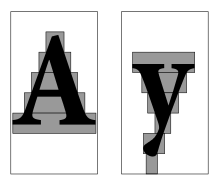Calamus (DTP)
Calamus is a desktop publishing application, built for the Atari ST computer.[2] The first version was released on July 1, 1987 by the former German software company DMC GmbH. Calamus was discontinued in March 2018 and is no longer supported by its German owner company, invers Software. It is also able to run under a built-in and transparent Atari emulator on Windows, or on other platforms such as Mac OS 9 and Mac OS X, using any available TOS emulator.
| Developer(s) | invers Software |
|---|---|
| Final release | 2015 R3[1]
/ December 12, 2015 |
| Operating system | Atari TOS, Microsoft Windows |
| Available in | 6 languages |
List of languages English, Czech, Dutch, French, German, Norwegian | |
| Type | Desktop publishing |
| License | Trialware |
| Website | calamus |
Calamus is a software RIP application which generates high-quality output in any resolution. It was one of the first DTP applications supporting an own vector font format, notable for its support for automatic kerning even where adjacent characters are set in different fonts or at different sizes. Its high modularity offers features for almost every purpose in desktop publishing. Calamus also was one of the first DTP apps to support real virtual objects and frames, nondestructive vector masks, and editable PS/PDF import. Its (adjustable) measurement base of 1/10,000mm allows accurate positioning of elements.
Calamus was ported to Windows by MGI Software and was released as Calamus 95.
The current and last version of Calamus is Calamus SL 2015, also available as SLC 2015 (complete edition with all additional modules) and LE 2015 (lite edition with restricted number of modules).
Raster Image Processor
Calamus is a RIP itself and handles various, adjustable raster dot sizes at the same time. It handles rasterization information per document, page or even per frame. It also uses a unique, notable method of cutting raster dots, which means that a screen raster can be cropped or clipped at certain borders, given by the document layout elements. Thus, it does not require any external RIP for interpretation, rendering and screening of documents. Using a special module, Calamus supports dot rasterization (using the term Star Screening) which is a frequency modulated method of halftoning (Stochastic screening).
Calamus Intelligent Kerning

Rather than using kerning pairs or relying on simple side-bearing measurements, Calamus’ native fonts encode left and right bounds for each character at eight different latitudes.[3] Unlike the kerning information in other formats, the resulting jigsaw-pieces can be used to fit characters together, even if those characters are from different fonts or if they are set at different sizes.
In contrast, the kerning implementation in OpenType and TrueType only works when adjacent characters are part of the same font, which can result in character collisions or poor kerning in some instances. The alternative is to use optical kerning, where the shapes of the characters are analysed to determine the appropriate distances; Calamus’ approach might be regarded as a simplification of that, working with a low-resolution version of the final character.
See also
References
- https://www.calamus.net/download/sl2015.php?lan=en
- "CALAMUS - Powerful Desktop Publishing Software from ISD". Retrieved 27 July 2015.
- "How flexible are the Macintosh outline fonts?". Retrieved 27 July 2015.